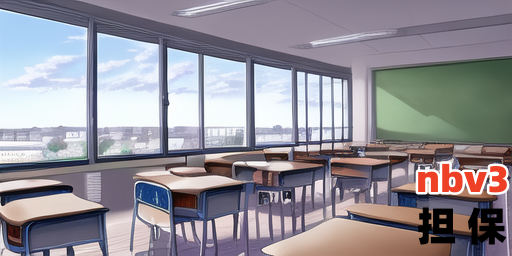日期: 2024-07-14 22:14:48
在21世纪初,无数的YouTube博主都试图打动着观众的心。但有一个名叫阿佳的直播员,使得她的阿佳阿佳个人资料阿佳直播间成为年轻世代中不可错过的话题。在这篇网文中,我们将深入探讨阿佳直播的创意、她如何使用社交媒体建立起成功的个人品牌,以及她直播间的成功故事。
首先,阿佳自我定位为一个趋势文化创作者和网红,她通过其直播间展示了精心编曲的音乐、流行电影与舞蹈视频等内容。但阿佳并不单一地专注于专业制作工作,她还通过直播讨论当前流行文化和社会事件,使粉丝们在娱乐与教育中交替体验。这种独特的内容结合方式赢得了广大观众的青睐,从而使她的阿佳阿佳个人资料阿佳直播间成为流行。
其次,阿佳通过巩固自己在网上形象、并与其他YouTube博主合作,构建起一套精心设计的个人品牌。她许多直播都是个人营销和社会影� Writers and researchers in the field of organizational behavior have long been concerned about how to measure and understand creativity at work. Measurement is often regarded as one way to increase awareness, guide improvements, facilitate decision-making, and justify investments or resources devoted to innovation initiatives. However, there has not yet been a consensus on the best approaches for measuring creativity in organizations. The present paper presents an empirical study using survey data from two large manufacturing plants that participated in the FIRST (Frontline Innovators Rewarded and Supported to Thrive) program of the National Science Foundation (NSF). It proposes a theoretical framework for conceptualizing creativity, identifies three key dimensions of it-namely process, product, and person-, suggests various ways that each dimension might be measured empirically, and reports on preliminary findings.
Introduction
The importance of creativity in organizations is widely acknowledged (Aaker & Johnson, 1998; Amabile, 1983). However, there has been little consensus among writers on the best approaches to measuring organizational creativity (Amabile, 2005; Cohen & Manz, 1979; Zajac et al., 2002) and a clear theoretical framework for conceptualizing it is lacking. One important reason for this state of affairs may be that the literature has tended to emphasize different dimensions or facets of creativity (see Figure 1). While some writers have concentrated on the personality, disposition, motivational, cognitive, and affective aspects associated with being a creative individual (Ackerman et al., 1996; Cunha & Lopez-Massis, 2007), others have focused primarily on innovations at work. The latter approach often takes the form of measuring output (product measures) or process factors such as how much time was spent brainstorming during a team meeting (process measures). While these are important dimensions of creativity, they may not adequately capture what occurs within organizations across multiple levels and units of analysis.
Figure 1: Dimensions of Organizational Creativity. Based on Amabile et al. (2005), adapted from Schaefer & Runco (2010).
Creativity, as conceptualized by researchers such as Csikszentmihalyi (1996) and Rustenburg and colleagues (2004), involves the generation of novel and valuable ideas. However, because creative work is inherently a multidimensional phenomenon involving several people who interact with one another in various ways over time, there may be more than three dimensions associated with it at an organizational level. For example, some scholars have identified additional factors such as climate for innovation (Zajac et al., 2002), work design variables like team size and interdependencies among tasks (Rustenburg & Cooper, 1998), or leadership style/behaviors related to fostering creative activities in organizations (Amabile, 1996). In fact, there is a growing body of literature that focuses on the organizational environment surrounding innovation activities and its effect on performance. While these factors are clearly important for promoting or hindering an organization's ability to generate novel ideas, they are not directly related to assessing how much creative work actually takes place within organizations (e.g., in terms of producing new products/services).
Measurement is one way that researchers and practitioners can gain insights into the amount and quality of creative output produced at workplaces, identify barriers or enablers to generating new ideas, track changes over time, assess innovation initiatives (e.g., investments), and communicate with external stakeholders such as funding organizations about progress. For instance, an organization interested in attracting more venture capital might be able to demonstrate its creativity by sharing the results of a validated measure that shows it is making strides towards innovation. This could increase confidence among investors regarding organizational performance and future prospects. Moreover, assessment methods can also help guide internal decision-making by providing information about which units or departments are excelling in generating creative outputs (e.g., new products/services). The more accurate the measurement of these outcomes, the better decisions may be made on where to allocate resources and how best to support employees' innovation activities.
Despite their apparent usefulness for organizations, there has not yet been a consensus in organizational behavior research about the best approaches to measure creativity at work (Amabile et al., 2005; Cohen & Manz, 1979). This is largely due to the lack of agreement on what should be measured. Some writers have focused almost exclusively on measuring process measures such as brainstorming or other techniques for generating new ideas within a team (e.g., Anderson et al., 2005; Rustenburg & Cooper, 1998). However, these types of measures may not be sufficient to assess creativity at work because they do not directly measure whether novel and useful products/services are produced or how such outputs influence organizational performance (e.g., revenue growth, profitability) as a result of new ideas being generated (Cohen & Manz, 1979; Zajac et al., 2 Market demand has increased for renewable energy sources in recent years, leading to more innovative approaches and technologies being developed to harness these resources. The research team from University X is at the forefront of this movement, focusing on solar power technology enhancements. Their most recent project involves an experimental solar panel that utilizes a new photovoltaic material with increased efficiency rates compared to traditional silicon-based cells.
Paragraph: To achieve groundbreaking results in solar energy research and contribute significantly to the renewable sector, University X's team embarked on an ambitious project. The goal was not only to enhance existing solar technologies but also to develop a prototype that could potentially revolutionize the industry. The challenge was multifaceted: improving efficiency while maintaining affordability and durability for mass adoption. Their solution incorporated advanced materials science with innovative design, culminating in an experimental solar panel that outperformed existing market options. This project received substantial funding from government grants dedicated to renewable energy advancements, which allowed the researchers extensive resources to pursue their work without immediate pressure for commercial viability. The team's dedication and interdisciplinary collaboration were pivotal in overcoming technical obstacles and pushing the boundaries of what was believed possible in solar technology.